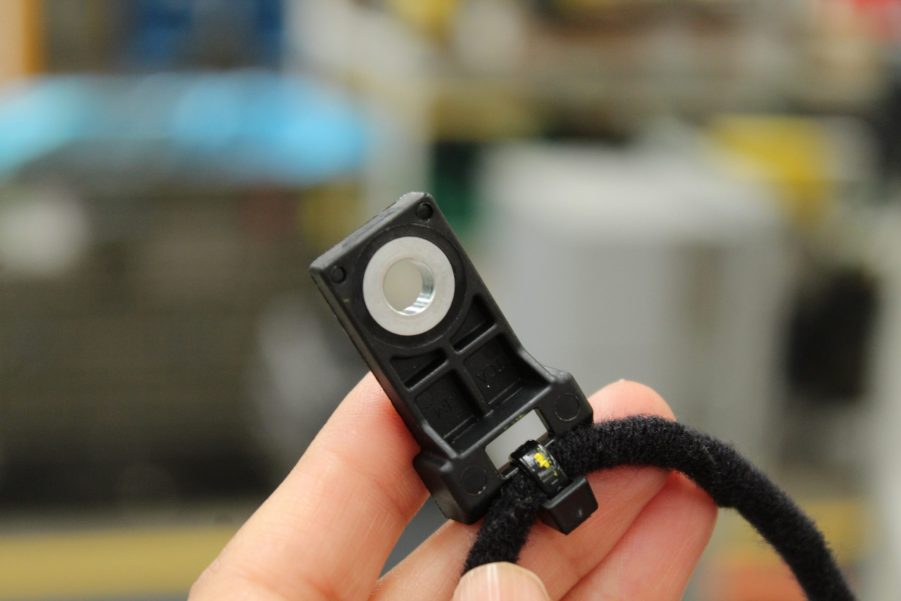
The New Ford Bronco Sport Is the Latest Catalyst for Change
While pushing for greater electrification is helpful for the environment, EVs won’t solve the world’s ecological issues on their own. Recognizing this, some companies have started improving their cars’ environmental sustainability in other, subtler ways. That includes not just rethinking fuel sources, but how certain parts are made, too. And for vehicles like the 2022 Ford Bronco Sport, that means embracing recycled plastic in a whole new way.
Each 2022 Ford Bronco Sport has a bit of recycled ocean plastic

Apart from rising CO2 levels and general pollution, our oceans are threatened by increasing amounts of plastic. Ever hear of the Great Pacific Garbage Patch? That’s just the biggest agglomeration. And it’s getting bigger, thanks to the estimated 13 million metric tons of plastic that annually hit the ocean, ABC reports.
Well, Ford is doing something about it using the 2022 Bronco Sport. Like essentially all new vehicles, the new Ford Bronco Sport uses plastic clips to keep its wiring harness in place. But these clips aren’t made brand-new from some petrochemical process. Instead, they’re made of recycled plastic that DSM Engineering Materials makes out of discarded nylon fishing nets, Car and Driver explains. Supplier HellermannTyton takes the pellets DSM makes and injection-molds them into the wiring clips.
For now, Ford is only using this recycled ocean plastic in the Bronco Sport’s wiring harness clips. Since each clip only weighs five grams, it’s a small step forward for automotive sustainability. But hey, you got to start somewhere. And since Ford is evaluating the recycled ocean plastic in places like the transmission and floor rails, it’s likely just the first step of many.
Are the 2022 Ford Bronco Sport’s recycled plastic parts unique?

Although the 2022 Ford Bronco Sport is the first production vehicle to use recycled ocean plastic parts, it’s not the first vehicle period. Back in 2018, Volvo created an XC60 concept with a recycled plastic-heavy interior, including a tunnel console made from nylon nets.
Speaking of Volvo, it, as well as its sibling brand Polestar, are planning to be carbon-neutral by 2030. Achieving that goal includes, among other things, using more recycled plastic in its interior and vehicle construction, ABC says. That includes seat fabrics made from plastic bottles and nets. Also, not only is Polestar using more recycled plastic, it’s replacing plastic panels with ones made out of a lighter, stronger flax-composite material.
But while Volvo and Polestar are arguably incorporating recycled plastics the most right now, other automakers are joining in. And we’re not just talking about Ford.
For example, BMW uses recycled post-consumer plastic in the 2023 iX’s floor mats. So is the fabric on the Mazda MX-30’s doors and the Volkswagen ID.Life concept’s roof. Most of the upcoming Fisker Ocean’s interior is made of recycled plastic as well. And while the 2022 Ford Bronco Sport uses ocean plastic as, well, plastic, the Audi e-tron GT’s carpets and floor mats are made of discarded fishing nets, too. The upcoming Audi A3 also uses a significant amount of recycled plastic in its seats and carpets, ABC adds.
In addition, recycled plastics aren’t only found in interiors or wiring harnesses. Michelin, for example, recently launched a carbon-neutral tire made mostly from reused plastic water bottles.
Plastic isn’t the only material automakers are reusing and re-thinking these days
Given that it’s everywhere in cars these days, plastic is a logical choice for a sustainability-boosting material. However, while using more recycled plastic keeps water bottles and nets from choking our oceans, it’s not the only recyclable material. Nor is it the only recyclable material car companies are mindful of.
As noted earlier, Volvo and Polestar have carbon-neutral plans. Those plans include not just sustainably-sourced plastics, but leather-free interiors, too. And because leathermaking often requires harsh chemicals, other automakers are exploring hide-free interiors, too. The MX-30 and Audi Skysphere concept, for instance, have imitation leather. And rather than traditionally-tanned leather, BMW sourced leather tanned using olive leaf extract.
But the sustainable material list goes on. In addition to the recycled-plastic fabric and leatherette, Mazda made the MX-30’s center console from cork leftover from wine stopper production. Meanwhile, Audi sourced low-CO2 aluminum to make the e-tron GT’s wheels. Furthermore, Michelin’s latest tire recipe includes, among other things, orange rinds and beer cans. And as part of its carbon-neutrality goals, Nissan plans to recycle rare-earth metals from EV motors.
Also, know how the 2022 Ford Bronco Sport uses recycled ocean plastic? Well, it’s not the first Ford made with sustainability in mind. In 2008, it replaced the Mustang’s petroleum-based seat cushion foam with a soy-derived version, ABC reports.
Sustainable design is all over the car world in more areas than just a few parts made of recycled plastic. But hopefully, it continues growing in scope and presence.
Follow more updates from MotorBiscuit on our Facebook page.


